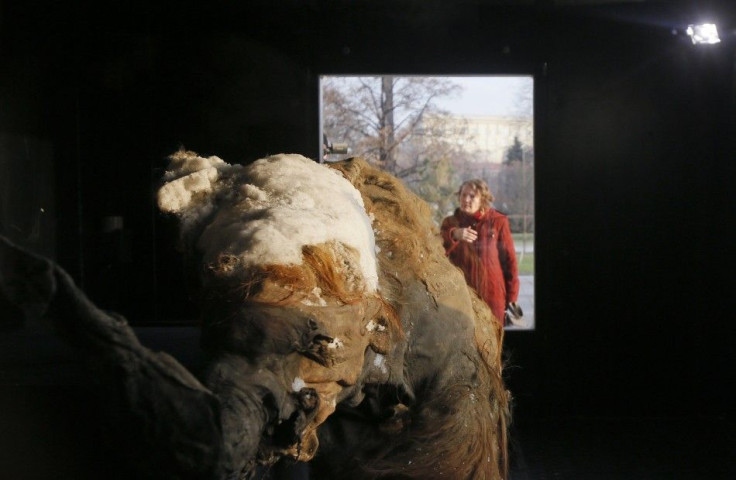Yuka, A Woolly Mammoth, Is Just 39,000 Years Young, And Wears A Reddish Coat

Her name is Yuka, and she is only 39,000 years old. A female mammoth who died "young" and "woolly" exhibits unique and reddish fur---although researchers feel that this is not necessarily what she looked like in life, as her family could have been wearing almost any coloured coat. Her carcass looks almost intact, according to rtnews.com,
Yuka is up for an exhibition in Moscow. Researchers are probing how she died and what is the secret that she carries about her species that has now become extinct. She was discovered in 2010 in Russia's Arctic Circle. Yuka---named by scientists, not her mother---arrived for the exhibition from Japan on a week-long tour in a cryo-chamber, in which the temperature is steady at -18 celsius. She was found by native Yakut tusk-hunters in a brief northern summer.
She was part of another Columbian mammoth skull, according to news.com. Albert Protopopov, a researcher from Yakutia, said that during the Ice Age, humans would hunt the Mammoth. She weighed more than 100 kilograms, but checking her tusk rings and structure, scientists realize that she was between six and eleven years---just a child in a species that could live upto 80 years. Her "intact brain," has also been found for the first time such an organ has been discovered, as it had not disintegrated over thousands of years in the Siberian permafrost.
The scientists had started an MRI scan of the mammoth in order to detect her age, and found her brain. They were stunned, but said that they had not received her in the "same state in which she was found," or they would have understood a lot about her brain, according to Sergey Saveliev, a Russian neuroscientist who studied Yuka, told TASS news agency.
How did she die? Daniel Fisher's team from the University of Michigan make one speculation---that she may have survived an attack by a cave lion that is now extinct, but has made scars on Yuka's skin. Lion attacks on baby elephants can be seen in Africa. The incisions that were made look similar.
However, after the first escape, she got a broken leg, and a lot of cuts indicate that she was chased and killed. There seems to be a serrated cut from her head to tail on her back. Unlike an animal that goes through the stomach or suffocates the elephant through the trunk, these cuts look systematic. Scientists speculate that the animal might have been hunted by a lion. Maybe a human tribe watched from some distance, waited for the lion to kill the animal, and then shooed the lion away. The Dorobo tribe in Kenya still practices such techniques, according to the experts.
Scientists have put together the woolly mammoth's genetic code from its fur, according to foxnews.com. DNA sequencing would help scientists to get more ideas about the mammoths, which would have grown to a size of 12 tons and lived in some remote areas till 1,700 BC. Hunting and climate change would impact their lives.
Some scientists want to do more than just observe and speculate what she was like. They would like to clone a mammoth from a specimen, by using a surrogate mother. Two leading teams in Japan and South Korea have actually taken up the project with a specimen containing a lot of soft tissue. However, it is perhaps almost impossible to do so, as living cells cannot be found after tens of thousands of years!





















